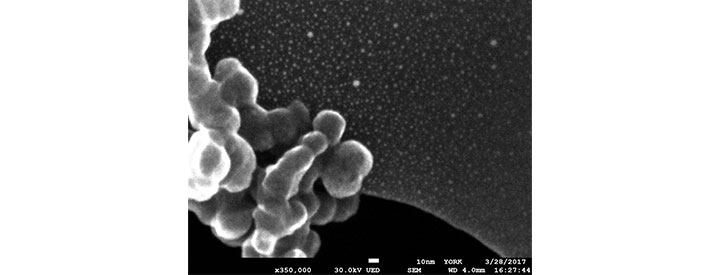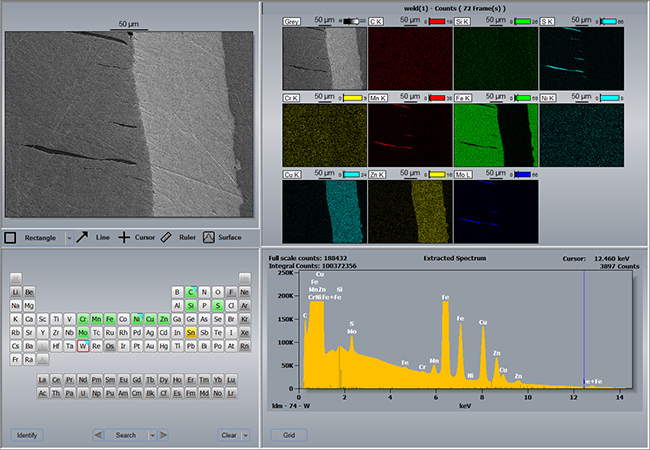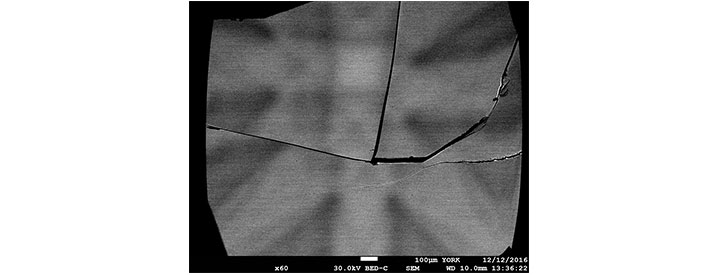Scanning Electron Microscopy
JEOL 7800F Prime SEM
The 7800F Prime was installed in 2016. It is a state-of-the-art scanning electron microscope (SEM) equipped with a Schottky (field-assisted) thermionic emitter, which allows a wide range of probe conditions: from small probe work (~1 nm) up to high probe currents (up to 200 nA) for X-ray microanalysis.
The instrument has five (5) detectors. These are selected according to the operating mode used:
- An off-axis Everhart-Thornley detector (or Lower Electron Detector, LED) collects backscattered electrons (BSE) and secondary electrons (SE).
- A retractable Robinson-type backscatter detector (BED-C) for Z-contrast (atomic number) imaging.
- Dual Oxford Instruments large area solid state detectors for energy dispersive X-ray spectroscopy (EDS)
In high-resolution mode the working distance is small (2 ≤ WD < 6 mm) the SEM operates with two dedicated in-lens detectors:
- The upper electron detector (UED) sits on-axis and collects BSEs and SEs. An electrostatic filter can change or remove the SE fraction.
- The upper secondary detector (USD) sits off-axis and collects SEs only.
Sample holders include 12.5 mm stubs and 32 mm stubs (Figure 1). TEM grids may also be used for nanoparticle or correlative imaging (e.g. optical/SEM/TEM). Further, a gentle-beam super-high (GBSH) biasing stage up to 5 kV stage biasing (up to 2 kV with regular holders). Stage biasing allows small electron landing energy and depth profiling using the back-scattered signal.
Please contact the York JEOL Nanocentre team for further details about access at nanocentre-access@york.ac.uk.
Example Applications

High-resolution imaging of gold particles (3 – 5 nm) on carbon with pyrolized graphitic clusters.

Elemental mapping of a weld cross-section (cast steel – brass – Reynolds 531 extruded steel) showing inclusions of MnS in the cast steel component. The brass (Cu-Zn) shows excellent wetting between the two. Taken at 15 keV beam energy.

Diffraction contrast of a broken germanium crystal showing channelling effects.
